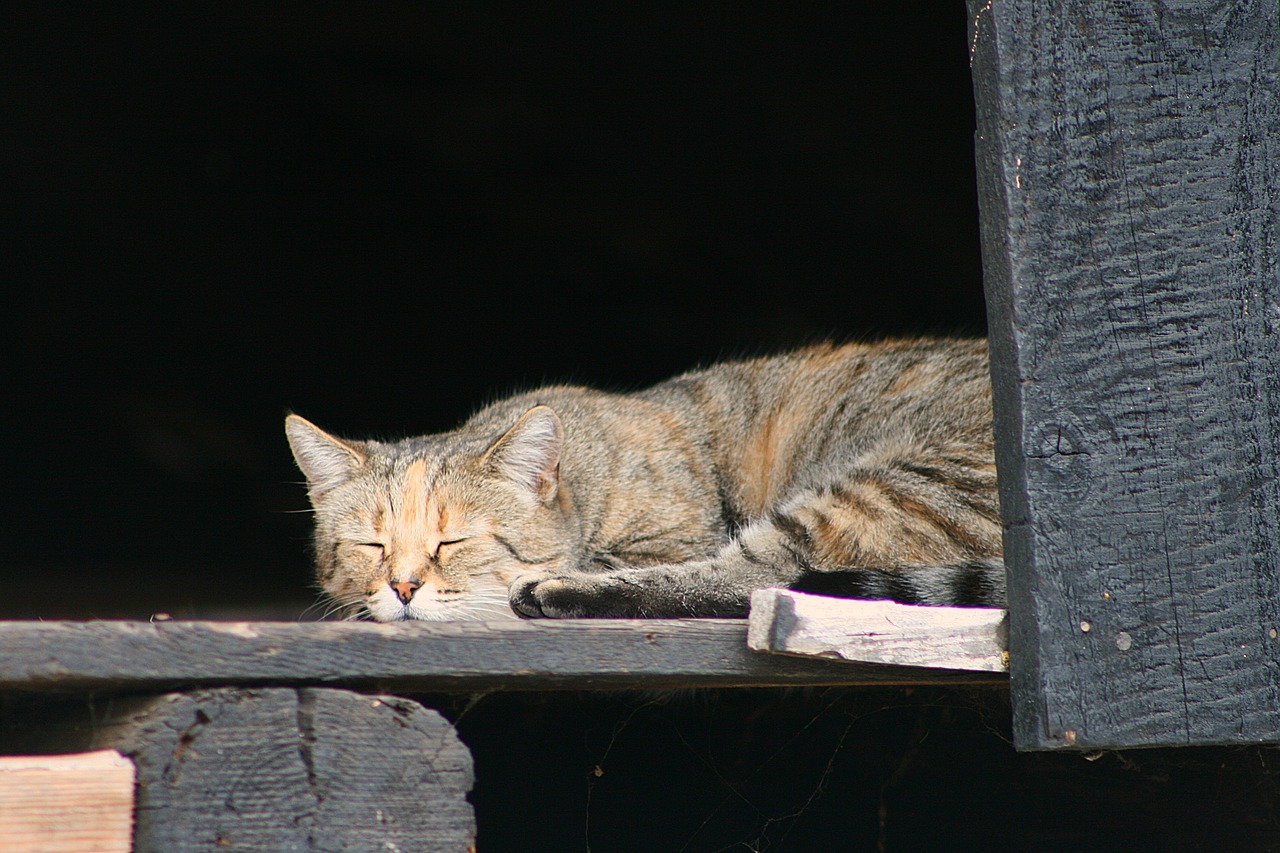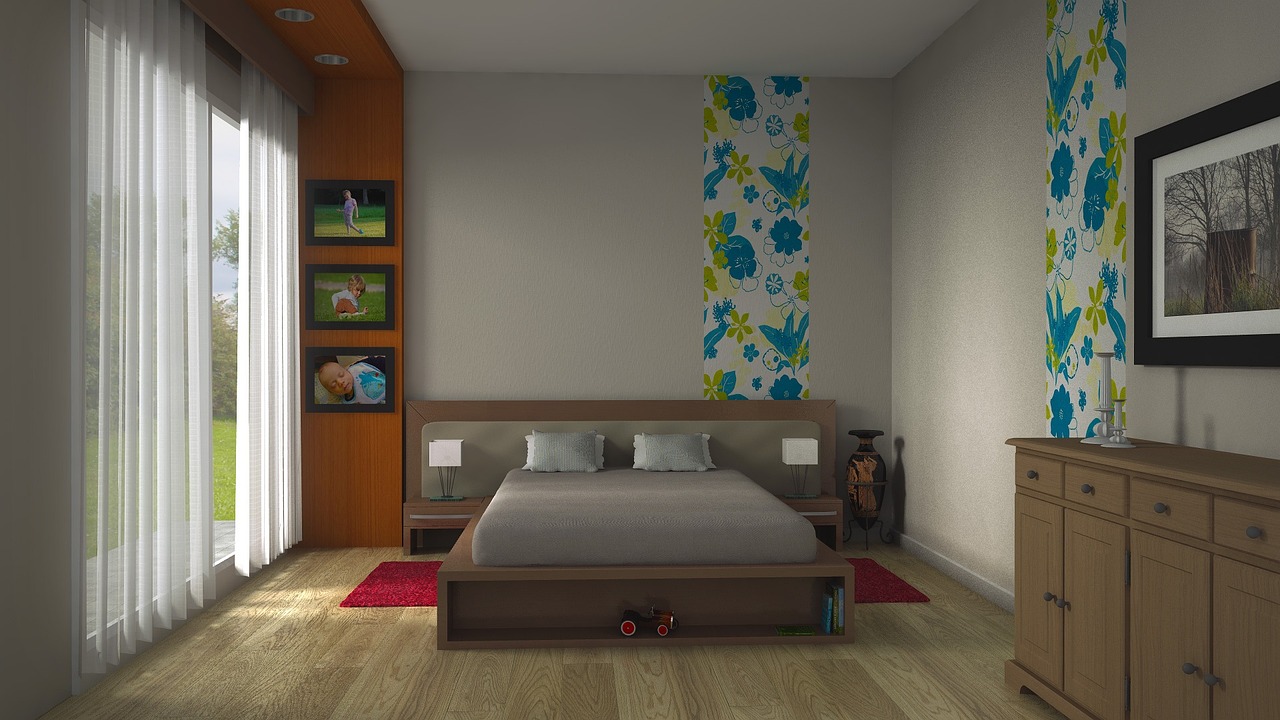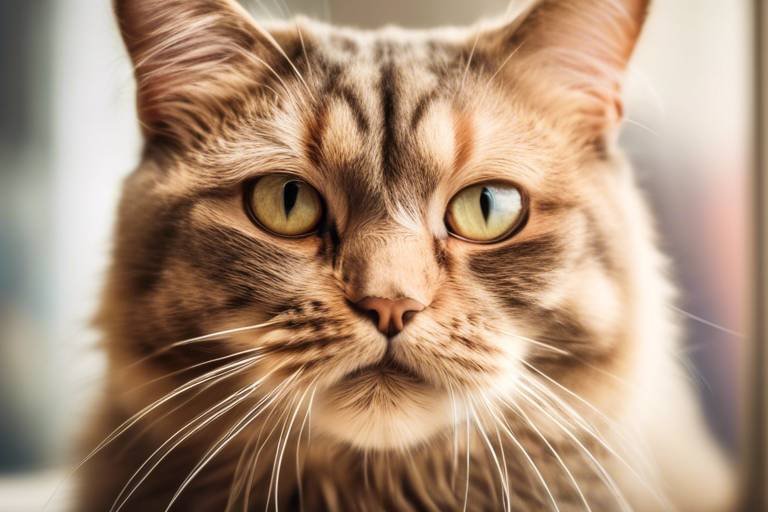Choosing the Right Bed for Your Senior Pet
Selecting the perfect bed for your senior pet is crucial for their comfort and health. Just like us, our furry friends experience changes as they age, and a cozy, supportive bed can make all the difference in their quality of life. Imagine coming home after a long day and sinking into a plush, inviting mattress—this is what we want for our aging pets. In this article, we will explore various types of beds, materials, and features that cater to the unique needs of older animals, ensuring they get the rest they deserve.
As pets age, their needs change significantly. It’s like watching a beloved family member grow older; they require more care and attention. Understanding these requirements is essential for choosing the right bed that promotes comfort and well-being. Senior pets often face challenges such as joint pain, decreased mobility, and sensitivity to temperature. Therefore, it's important to consider beds that provide joint support and temperature regulation. Think of it as creating a little sanctuary where your pet can feel safe, comfortable, and loved.
Different types of pet beds cater to various preferences and needs. From orthopedic beds to heated options, exploring the types available helps in making an informed decision for your senior pet. Each type of bed has its own unique features that can benefit your pet in different ways. Below, we delve into some popular categories:
Orthopedic beds are designed to provide extra support for aging joints and muscles. These beds often feature memory foam or other supportive materials that help alleviate discomfort and promote restful sleep. Think of these beds as the luxury cars of the pet world—engineered for comfort and support, they are perfect for pets that need a little extra care. They cradle your pet's body, allowing them to relax without the pressure on their joints.
Memory foam adapts to the pet's body shape, providing tailored support. This feature can be particularly beneficial for senior pets suffering from arthritis or other joint issues, enhancing their overall comfort. Imagine wearing a pair of shoes that molds perfectly to your feet; that's what memory foam does for your pet. It distributes their weight evenly, reducing stress on pressure points and promoting a deeper, more restorative sleep.
Selecting the appropriate size is vital for a pet's comfort. A snug fit can provide a sense of security, while ample space allows freedom of movement, ensuring a restful sleep environment. When choosing a bed, consider your pet's size and sleeping habits. Here’s a quick guide:
| Pet Size | Recommended Bed Size |
|---|---|
| Small (up to 20 lbs) | Small bed (24-30 inches) |
| Medium (21-50 lbs) | Medium bed (30-36 inches) |
| Large (51-90 lbs) | Large bed (36-42 inches) |
| Extra Large (91+ lbs) | Extra-large bed (42 inches and up) |
Heated beds can be a great option for senior pets, especially those with arthritis or joint pain. These beds provide warmth that can soothe aches and improve overall comfort during colder months. Imagine wrapping your pet in a warm blanket on a chilly day—this is what heated beds do! They help maintain a comfortable body temperature, which is especially important for older pets who may struggle to regulate their heat.
The materials used in pet beds can affect durability, comfort, and ease of cleaning. Exploring various materials helps pet owners choose a bed that meets their senior pet's needs effectively. A well-chosen material can enhance the overall experience for your pet, making their sleeping area a pleasant retreat.
Choosing beds with washable fabrics is essential for maintaining hygiene. Easy-to-clean materials help reduce allergens and odors, ensuring a healthier sleeping environment for your senior pet. After all, a clean bed is a happy bed! Look for removable covers that can be tossed in the washing machine for a quick refresh.
Balancing durability and softness is key when selecting a bed. While soft materials provide comfort, durable options ensure longevity, making the bed a worthwhile investment for your senior pet's needs. Think of it like finding the perfect pair of jeans; you want them to be both comfortable and long-lasting. Investing in quality materials will save you money and ensure your pet has a cozy spot to rest for years to come.
- How often should I replace my pet's bed?
It's recommended to replace your pet's bed every 1-2 years, depending on wear and tear. - Can I use human beds for my pet?
While it's possible, human beds may not provide the necessary support for senior pets. It's best to choose a bed specifically designed for pets. - What if my pet refuses to use the new bed?
Try placing familiar blankets or toys in the new bed to encourage your pet to explore it.

Understanding Senior Pet Needs
As our furry companions age, their needs evolve in ways that can be surprising yet crucial to their well-being. Just like humans, senior pets experience changes in their bodies that can affect their daily lives. This is why understanding their unique requirements is essential for ensuring they remain comfortable and happy. One of the most significant changes is in their joint health. Senior pets often suffer from arthritis or other joint-related issues, making it vital to provide them with adequate support while they sleep. Think of it like giving them a cozy hug that helps alleviate their discomfort.
Temperature regulation is another critical aspect to consider. Older pets can struggle to maintain their body temperature, particularly during colder months. This means that a bed that offers warmth can make a world of difference for them. Imagine how nice it feels to snuggle under a warm blanket on a chilly night; your senior pet deserves that same comfort!
Moreover, senior pets may have specific preferences when it comes to their sleeping environment. Some may prefer a snug, enclosed area that provides a sense of security, while others might enjoy a more spacious bed that allows them to stretch out. Observing their behavior can give you valuable insights into what type of bed will suit them best.
Lastly, don’t forget about the importance of hygiene. Older pets may have more sensitive skin or be prone to allergies, so a bed that is easy to clean can help maintain a healthy sleeping space. You wouldn’t want to sleep in a dirty bed, right? The same goes for your beloved pet!
In summary, understanding the needs of senior pets involves recognizing their changing bodies, preferences, and the importance of a clean and comfortable sleeping environment. By paying attention to these factors, you can make informed decisions that will enhance their quality of life.

Types of Pet Beds
When it comes to choosing the right bed for your senior pet, the options can be as varied as the pets themselves. Each type of bed offers unique features that cater to different needs and preferences. Understanding these types can help you make an informed decision that ensures your furry friend enjoys maximum comfort and support. Whether your pet prefers a cozy nook or a spacious sleeping area, there’s a bed out there just waiting for them!
First up, we have orthopedic beds. These beds are a game-changer for older pets suffering from joint pain or arthritis. They are specifically designed to provide extra support, often featuring high-density memory foam that conforms to your pet's body shape. This adaptive support can relieve pressure points, making it easier for your pet to get in and out of bed without discomfort. Imagine how much better your pet will feel when they can finally rest without the nagging pain that often accompanies aging joints!
Next on the list are heated beds. If your senior pet tends to feel chilly or is dealing with chronic pain, a heated bed can be a soothing sanctuary. These beds provide gentle warmth that can ease muscle stiffness and improve circulation. Think of it as a warm hug that helps your pet relax, especially during those cold winter months. However, it’s essential to monitor the temperature settings to ensure your pet stays comfortable and safe.
Another popular option is the elevated bed. These beds are designed to keep your pet off the ground, providing better airflow and temperature control. This can be particularly beneficial for pets that tend to overheat or those who are prone to allergies. Plus, elevated beds are easier to clean, as they prevent dirt and debris from accumulating underneath. They can be a fantastic choice for outdoor pets or those who enjoy lounging in the sun!
For those who love a bit of luxury, nesting beds offer a plush, cozy environment that makes pets feel secure. These beds often come with raised edges that create a sense of enclosure, perfect for pets who like to curl up while they sleep. The soft materials used in nesting beds can provide a comforting atmosphere, making it easier for your senior pet to drift off into dreamland.
In addition to these types, there are also travel beds designed for pets on the go. If you frequently take your senior pet on trips, having a portable, comfortable bed can make a world of difference. These beds are typically lightweight and easy to pack, ensuring your pet has a familiar place to rest, no matter where you are.
Ultimately, the best bed for your senior pet will depend on their specific needs and preferences. It might take a little trial and error to find the perfect fit, but considering factors like support, warmth, and comfort will guide you in the right direction. Don’t forget to involve your pet in the decision-making process! After all, who knows better what they like than your furry companion?
Orthopedic Beds
When it comes to providing the best for our senior pets, are a game changer. These specially designed beds focus on offering extra support for aging joints and muscles, making them an essential addition to your furry friend's comfort zone. Imagine the relief your pet will feel as they sink into a bed that cradles their body, easing the stress on their joints and allowing them to enjoy a restful sleep. Orthopedic beds often feature materials like memory foam or high-density foam, which contour to your pet’s unique body shape. This personalized support is particularly beneficial for pets suffering from conditions like arthritis, hip dysplasia, or general stiffness.
One of the standout features of orthopedic beds is their ability to distribute weight evenly. This distribution minimizes pressure points, which can lead to discomfort and restlessness. For senior pets, who may already be dealing with chronic pain or mobility issues, the right bed can make all the difference. Think of it as a cloud of comfort that gently supports their body while they sleep. Not only do these beds promote better sleep quality, but they also encourage healthier joint function over time.
When selecting an orthopedic bed, it’s crucial to consider the size. A bed that’s too small can make your pet feel cramped, while one that’s too large might not provide the snug feeling that many animals prefer. Ideally, the bed should be spacious enough for your pet to stretch out comfortably, yet cozy enough to give them a sense of security. Here’s a quick guide to help you choose the right size:
| Pet Size | Recommended Bed Size |
|---|---|
| Small (up to 20 lbs) | Small (20x15 inches) |
| Medium (21-50 lbs) | Medium (30x20 inches) |
| Large (51-90 lbs) | Large (36x24 inches) |
| X-Large (91 lbs and up) | X-Large (42x28 inches) |
In summary, investing in an orthopedic bed for your senior pet isn’t just about comfort; it’s about enhancing their quality of life. By providing a supportive sleeping surface, you're not only helping them sleep better but also promoting their overall health and well-being. So, if your furry companion is showing signs of discomfort or restlessness, it might be time to consider making this thoughtful upgrade to their sleeping arrangements.
Q: How do I know if my pet needs an orthopedic bed?
A: Signs that your pet may need an orthopedic bed include difficulty getting up, reluctance to jump or climb stairs, and visible signs of discomfort when lying down. If your pet is showing these signs, an orthopedic bed could greatly improve their comfort.
Q: Are orthopedic beds washable?
A: Many orthopedic beds come with removable, machine-washable covers. This feature is essential for maintaining hygiene and ensuring your pet's sleeping area is clean and free of allergens.
Q: How long do orthopedic beds last?
A: The lifespan of an orthopedic bed depends on the quality of materials used and how often it’s used. High-quality orthopedic beds can last several years, especially if they have durable covers and are well-maintained.
Benefits of Memory Foam
Memory foam beds are more than just a trendy choice; they are a game-changer for your senior pet's comfort and well-being. Imagine sinking into a cloud that molds perfectly to your body, offering support where you need it most. That's exactly what memory foam does for our furry friends! As pets age, they often experience discomfort due to conditions like arthritis or joint pain, and a memory foam bed can make a world of difference.
One of the standout features of memory foam is its ability to adapt to the unique shape of your pet's body. This means that every time they lay down, the bed contours to their form, providing optimal support and reducing pressure on sensitive joints. It's like having a custom-made mattress just for them! In addition, this material helps to distribute their weight evenly, which can significantly alleviate pain and discomfort.
But the benefits don't stop there! Memory foam is also great at temperature regulation. It can help keep your pet warm during chilly nights while also being breathable enough to prevent overheating in warmer weather. This dual functionality ensures that your senior pet stays comfortable no matter the season.
Moreover, many memory foam beds come with removable and washable covers, making it easy to maintain a clean sleeping environment. This is particularly important for senior pets, who may have more accidents or issues with incontinence. Regular cleaning helps to reduce allergens and keep their resting place fresh and inviting.
In summary, the benefits of memory foam beds for senior pets can be categorized as follows:
- Joint Support: Reduces pressure on joints and alleviates pain.
- Custom Fit: Adapts to your pet's body shape for personalized comfort.
- Temperature Control: Helps maintain ideal body temperature.
- Easy Maintenance: Many models feature washable covers for hygiene.
Choosing a memory foam bed for your senior pet is not just a luxury; it’s a thoughtful investment in their health and happiness. After all, they deserve the best care we can provide as they age gracefully by our side.
Choosing the Right Size
Selecting the perfect bed for your senior pet is crucial for their comfort and health. This article explores various types of beds, materials, and features that cater to the unique needs of older animals.
As pets age, their needs change significantly. Understanding these requirements, including joint support and temperature regulation, is essential for choosing the right bed that promotes comfort and well-being.
Different types of pet beds cater to various preferences and needs. From orthopedic beds to heated options, exploring the types available helps in making an informed decision for your senior pet.
Orthopedic beds are designed to provide extra support for aging joints and muscles. These beds often feature memory foam or other supportive materials that help alleviate discomfort and promote restful sleep.
Memory foam adapts to the pet's body shape, providing tailored support. This feature can be particularly beneficial for senior pets suffering from arthritis or other joint issues, enhancing their overall comfort.
When it comes to selecting a bed for your senior pet, size matters. A well-sized bed not only enhances comfort but also contributes to a sense of security. Here are a few key points to consider:
- Snug Fit: A bed that is too large can make your pet feel insecure, as they may struggle to find a comfortable position. A snug fit provides a cozy, secure spot that can help them relax.
- Room to Stretch: On the other hand, a bed that is too small can lead to discomfort, restricting your pet’s ability to move freely. Ensure there’s enough space for them to stretch out comfortably.
- Measurements Matter: Always measure your pet from nose to tail and consider their preferred sleeping position. This will help you choose a bed that accommodates their size and habits.
For example, if your pet tends to curl up when sleeping, a slightly smaller bed may be ideal. Conversely, if they like to sprawl out, a larger bed is necessary. Here’s a simple size guide to help you:
| Pet Weight | Recommended Bed Size |
|---|---|
| Up to 15 lbs | Small (20" x 25") |
| 16 to 30 lbs | Medium (25" x 30") |
| 31 to 50 lbs | Large (30" x 36") |
| Over 50 lbs | Extra Large (36" x 42") |
Ultimately, the right bed size will depend on your pet’s unique needs and sleeping style. By considering these factors, you can ensure your senior pet enjoys a restful and rejuvenating sleep.
Heated beds can be a great option for senior pets, especially those with arthritis or joint pain. These beds provide warmth that can soothe aches and improve overall comfort during colder months.
The materials used in pet beds can affect durability, comfort, and ease of cleaning. Exploring various materials helps pet owners choose a bed that meets their senior pet's needs effectively.
Choosing beds with washable fabrics is essential for maintaining hygiene. Easy-to-clean materials help reduce allergens and odors, ensuring a healthier sleeping environment for your senior pet.
Balancing durability and softness is key when selecting a bed. While soft materials provide comfort, durable options ensure longevity, making the bed a worthwhile investment for your senior pet's needs.
Q: How often should I replace my senior pet's bed?
A: It's generally recommended to replace your pet's bed every 1-2 years, depending on wear and tear. Regular checks for comfort and support are essential.
Q: Can I use a human bed for my senior pet?
A: While you can, it's better to choose a bed specifically designed for pets. Pet beds often have features that cater to their unique needs, such as orthopedic support.
Q: How do I clean my senior pet's bed?
A: Most pet beds come with removable covers that can be machine washed. For non-washable beds, spot cleaning with pet-safe cleaners is recommended.
Heated Beds
When it comes to ensuring your senior pet's comfort, can be a game changer. These beds are specifically designed to provide a warm, cozy environment that can alleviate discomfort associated with aging, particularly for pets suffering from arthritis or joint pain. Imagine curling up on a chilly night with a warm blanket; that's the kind of comfort a heated bed can offer your furry friend. The gentle warmth can help soothe stiff muscles and joints, making it easier for them to relax and enjoy their well-deserved rest.
One of the key benefits of heated beds is their ability to maintain a consistent temperature. Many heated beds come with adjustable heat settings, allowing you to customize the warmth according to your pet's needs. For example, older pets may prefer a lower setting to avoid overheating, while those with more severe discomfort might benefit from a higher temperature. It's like having a personal heating pad specifically tailored for their comfort!
Moreover, heated beds are particularly beneficial during the colder months. Just like humans, pets can feel the chill, and a warm bed can make all the difference. You might be surprised to learn that some heated beds are designed with energy-efficient features, which means you can keep your pet warm without skyrocketing your electric bill. It's a win-win situation!
When selecting a heated bed, consider the following factors:
- Safety Features: Look for beds with automatic shut-off features to prevent overheating.
- Material: Ensure the bed is made from pet-safe materials that are comfortable and easy to clean.
- Size: Choose a size that allows your pet to stretch out comfortably while still feeling secure.
In addition to physical comfort, heated beds can also provide emotional benefits. Many pets find comfort in warmth, which can reduce anxiety and promote a sense of security. It's like wrapping them in a warm hug, making them feel safe and loved. So, if you're considering a heated bed for your senior pet, you're not just investing in their physical well-being but also their emotional health.
1. Are heated beds safe for pets?
Yes, heated beds are generally safe for pets, especially those designed with safety features like automatic shut-off. Always choose a bed specifically made for animals and follow the manufacturer's guidelines.
2. Can I leave my pet unattended on a heated bed?
While many heated beds are safe for unattended use, it's best to monitor your pet, especially if they are prone to chewing or scratching. Regular checks will also ensure they are comfortable and not overheating.
3. How do I clean a heated pet bed?
Most heated beds come with removable covers that can be machine washed. Always check the care instructions provided by the manufacturer to maintain the bed's functionality and safety.
4. What temperature should I set for my senior pet?
It's advisable to start with a lower temperature setting and adjust based on your pet's comfort level. Each pet is different, so observe their behavior and preferences.

Materials to Consider
When it comes to choosing the right bed for your senior pet, the materials used in the construction of the bed can make a world of difference. Just like humans, pets have their own preferences and needs when it comes to comfort. A bed made from the right materials can enhance their sleeping experience and contribute to their overall health. So, what should you be looking for? Let’s dive into the key materials that will keep your furry friend cozy and happy.
First and foremost, consider washable fabrics. Senior pets can sometimes have accidents, and maintaining hygiene is crucial. Beds made from materials that can be easily washed will help keep allergens and odors at bay. Look for removable covers that can be tossed into the washing machine without hassle. This not only ensures a clean sleeping environment but also prolongs the life of the bed.
Another important factor is the balance between durability and softness. You want a bed that can withstand the wear and tear of daily use while still providing the plush comfort your pet craves. Soft materials like fleece or plush fabrics can be inviting, but they may not hold up as well over time. On the other hand, durable materials like canvas or heavy-duty nylon can withstand scratching and digging but might not offer the same level of comfort. It’s essential to find a bed that strikes the right balance, allowing your pet to feel secure and comfortable without sacrificing longevity.
Additionally, consider the insulation properties of the materials. Some senior pets may struggle with temperature regulation, especially during colder months. Beds made from materials that provide insulation can help keep your pet warm and cozy. Look for beds with thermal layers or heated options if your pet suffers from joint pain or arthritis. This extra warmth can be a game-changer, providing relief and enhancing their quality of life.
Lastly, pay attention to the eco-friendliness of the materials. More pet owners are becoming conscious of the environmental impact of their purchases. Opting for beds made from sustainable materials not only helps the planet but also ensures that your pet is resting on non-toxic, safe substances. Brands that prioritize eco-friendly practices often use recycled materials or natural fibers, which can be beneficial for both your pet and the environment.
| Material Type | Benefits | Considerations |
|---|---|---|
| Washable Fabrics | Easy to clean, reduces allergens | Check for machine-washable options |
| Soft Materials | Comfortable and inviting | May wear out faster |
| Durable Materials | Long-lasting, withstands wear | Can be less comfortable |
| Insulated Fabrics | Keeps pets warm, great for cold weather | May be heavier; check for flexibility |
| Eco-friendly Materials | Safe for pets and the environment | Can be pricier; check for certifications |
In conclusion, selecting the right materials for your senior pet's bed is a crucial step in ensuring their comfort and well-being. By considering factors such as washability, durability, insulation, and sustainability, you can make an informed choice that caters to your pet's unique needs. After all, a happy and healthy pet is a joy to have around!
Q: How often should I wash my senior pet's bed?
A: It's recommended to wash your senior pet's bed at least once a month, or more frequently if they have accidents or if they shed a lot. Keeping it clean helps reduce allergens and odors.
Q: What size bed should I choose for my senior pet?
A: The bed should be large enough for your pet to stretch out comfortably but snug enough to provide a sense of security. Measure your pet while they are lying down to find the best size.
Q: Are heated beds safe for senior pets?
A: Yes, heated beds can be very beneficial for senior pets, especially those with joint pain. Just ensure that the bed has a reliable heating source and is designed specifically for pets.
Q: How can I tell if my pet is comfortable in their bed?
A: Signs of comfort include your pet settling in quickly, stretching out, and not trying to leave the bed frequently. If they seem restless or avoid the bed, it may not be the right fit.
Washable Fabrics
When it comes to your senior pet's bed, hygiene is a top priority, and this is where come into play. As our furry companions age, they may experience incontinence or other health issues that can lead to messes. Choosing a bed made from materials that can be easily washed not only helps maintain a clean environment but also contributes to your pet's overall health. Imagine snuggling up on a freshly washed bed—there's nothing quite like it, right? The same goes for your pet!
Opting for beds with removable covers is a smart choice, as they allow for easy cleaning. Simply toss the cover in the washing machine and voilà! You have a fresh, clean sleeping space for your beloved pet. Look for fabrics that are not only washable but also durable enough to withstand frequent cleaning. Here are some materials that are excellent for this purpose:
- Cotton: Breathable and soft, cotton is a classic choice that is easy to wash and maintain.
- Microfiber: Known for its stain resistance, microfiber is another fantastic option that can handle spills and messes.
- Canvas: This tough fabric is perfect for pets that like to scratch or chew, and it can be washed easily.
Furthermore, consider beds that feature water-resistant liners. These liners act as a protective barrier against moisture, ensuring that any accidents don't seep into the inner layers of the bed. This not only prolongs the life of the bed but also makes cleaning much simpler. You can wash the outer cover regularly, while the liner provides an extra layer of defense against unwanted odors and bacteria.
In addition to being easy to clean, washable fabrics can also help reduce allergens. Dust mites and pet dander can accumulate in beds over time, which can be particularly troublesome for senior pets with allergies or respiratory issues. Regular washing can significantly decrease these allergens, creating a healthier sleeping environment for your furry friend.
Ultimately, investing in a pet bed made from washable fabrics is a win-win. It keeps your home clean, promotes your pet's health, and provides them with a comfortable place to rest. So next time you're on the hunt for that perfect bed, remember to check the fabric. Your senior pet will thank you for it!
- How often should I wash my pet’s bed? It’s recommended to wash your pet's bed at least once a week, or more frequently if your pet has accidents or sheds heavily.
- Can I use regular laundry detergent? Yes, but opt for a mild detergent that is free of harsh chemicals to avoid irritating your pet's skin.
- Are there beds that are both washable and durable? Absolutely! Look for beds made from high-quality materials like canvas or microfiber that are designed for easy cleaning.
Durable vs. Soft Materials
When it comes to choosing the perfect bed for your senior pet, one of the most crucial decisions you'll face is the balance between durability and softness. Think of it like choosing between a cozy blanket and a sturdy jacket. Both serve different purposes, and understanding your pet's needs will help you make the right choice. Senior pets often have specific requirements due to age-related issues, such as arthritis or sensitive skin, which can make this decision even more significant.
On one hand, soft materials provide the comfort that older pets crave. Imagine sinking into a plush pillow after a long day—it's a blissful experience! Soft beds can help alleviate pressure points, allowing your furry friend to rest comfortably. However, not all soft materials are created equal. Some may wear out quickly or lose their shape, leaving your pet with inadequate support.
On the flip side, durable materials are essential for longevity. Think of them as the sturdy foundation of a house. They can withstand the wear and tear of daily use, especially if your pet enjoys scratching or digging at their bed. Materials like heavy-duty canvas or reinforced fabrics can resist damage and maintain their structure over time. However, the challenge lies in finding durable materials that don't sacrifice comfort. A bed that feels like a rock may not be appealing to your senior pet, who needs a softer touch.
So, how do you find the right balance? Here are a few tips:
- Check the material blend: Look for beds that combine soft, plush fabrics with durable bases. For example, a memory foam core wrapped in a soft fleece cover can provide both comfort and longevity.
- Consider your pet's habits: If your pet is a chewer or scratcher, opt for more robust materials that can withstand such behaviors.
- Test the bed: If possible, let your pet try out the bed before purchasing. Observe how they react—if they seem to sink in comfortably and curl up, that’s a good sign!
Ultimately, the best bed for your senior pet will offer a combination of both durability and softness. By investing in a bed that meets these criteria, you’re not just enhancing their sleep experience; you’re also contributing to their overall health and happiness. Remember, a well-rested pet is a happy pet!
Q: How often should I replace my senior pet's bed?
A: It's generally a good idea to replace your senior pet's bed every 1-2 years, depending on wear and tear. If you notice flattening or damage, it's time for a new one!
Q: Are heated beds safe for all senior pets?
A: Most senior pets can benefit from heated beds, especially those with joint pain. However, always monitor your pet's comfort and consult your veterinarian if you have concerns.
Q: What size bed should I get for my senior pet?
A: The bed should be large enough for your pet to stretch out comfortably but snug enough to provide a sense of security. Measure your pet while they are lying down to find the right size.
Q: How can I keep my senior pet's bed clean?
A: Choose beds with removable, washable covers to make cleaning easy. Regularly wash the cover and vacuum the bed to keep it fresh and free of allergens.
Frequently Asked Questions
- What should I consider when choosing a bed for my senior pet?
When selecting a bed for your senior pet, think about their specific needs, such as joint support and temperature regulation. Look for features like orthopedic support, washable fabrics, and the right size to ensure they have a comfortable and safe sleeping environment.
- Are orthopedic beds really beneficial for older pets?
Absolutely! Orthopedic beds are designed to provide extra support for aging joints and muscles. They often use materials like memory foam that contour to your pet's body, helping to alleviate discomfort and promote better sleep, especially for pets suffering from arthritis.
- How do heated beds help senior pets?
Heated beds can be a game changer for senior pets, particularly those with arthritis or joint pain. The warmth helps soothe aches and provides comfort during colder months, making it easier for your furry friend to relax and enjoy their rest.
- How important is it to choose washable fabrics for pet beds?
Choosing washable fabrics is crucial for maintaining a hygienic sleeping environment for your senior pet. Easy-to-clean materials can significantly reduce allergens and odors, ensuring your pet stays healthy and comfortable while they sleep.
- What size bed should I get for my senior pet?
The right size bed is essential for your pet's comfort. A snug fit can provide a sense of security, while a larger bed allows for freedom of movement. Measure your pet and consider their sleeping habits to find the perfect size.
- Do I need to balance durability and softness in a pet bed?
Yes! It's important to find a balance between durability and softness. While soft materials offer comfort, durable options ensure the bed lasts longer, making it a worthwhile investment for your senior pet's needs.



















